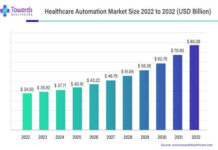The 3D printing market is a rapidly growing market. Since 2008, the 3D printing market has started penetrating in almost every industry vertical such as aerospace, manufacturing, healthcare, and consumer electronics. The less wastage compared to the traditional printing methods is one of the key reasons for the industries to adopt “3D printing” methods. The interdependence of software, technology and material are contributing towards the success of the worldwide 3D printing market.
According to Infoholic Research, the “Worldwide 3D Printing in Aerospace and Consumer Electronics” market will grow at an estimated CAGR of 28.2% during the forecast period 2016–2022. At present, the market is witnessing a twofold growth in the mature markets of North America and Europe. Although, for the past 2–3 years, the market has started experiencing growth in the Asia Pacific region specifically in the 3D printer market. Increase in the investment by the big players and growing Public Private Partnerships (PPPs) is helping in the 3D printing market growth in the aerospace industry. The demand for the sleek, light-weight and complex designed products are driving the 3D printing market in the consumer electronics industry.
Key players covered in the report are 3D Systems, Stratasys, Boeing, Aerojet Rocket Dyne, GE Aviation, Optomec, XYZ Printing, HP Development Company, Rolls-Royce, Safran Turbomeca and Airbus. The research report provides a comprehensive review of 3D printing technologies and 3D printing materials. The report also covers 3D printing market in aerospace and consumer electronics market in terms of trends, regions and vendor assessments on the basis of technology, R&D spendings, and product offerings.
The study covers and analyzes the “Worldwide 3D Printing in Aerospace and Consumer Electronics” market. Bringing out the complete key insights of the industry, the report aims to provide an opportunity for players to understand the latest trends, current market scenario, government initiative, and technologies related to the market. In addition, helps the venture capitalist in understanding the companies better and take informed decisions.
3D technology has started changing the manufacturing industry. With the help of the 3D printing technology, the manufacturing industry is able to design complex designed components. The 3D printing technology is mainly being adopted by the consumer electronics industry. The manufacturers are able to improve their supply chains, and design minute, light weight product components with the help of the 3D technology.
For the past 2–3 years, the 3D printing market has started penetrating into the aerospace industry. A lot of companies and government bodies such as Space exploration centres have started investing in the 3D printing technology. With the help of the 3D printing technology, the aerospace manufacturers are able to reduce the cost of raw materials, decrease the aircraft cost and improve the interiors of the aircraft.
North America and Europe are currently dominating the worldwide 3D printing market. Plastic and metal are the preferred 3D printing materials, whereas layered 3D printing technologies are the preferred 3D printing technologies.
The worldwide 3D printing market in Aerospace and Consumer Electronics market is expected to reach $ 11.14 by 2022 at an estimated CAGR of 28.2% for the forecasted period 2016-2022.
Regional Overview
North America, Europe, Asia Pacific, Latin America, Africa and Middle East (LAAM)
Technologies:
Fused Deposition Modeling (FDM), Selective Laser Sintering (SLS), Stereolithography (SLA), Others
Materials:
Plastic , Ceramics, Rubber, Metal, Wax, Others
Verticals:
Aerospace, Consumer Electronics
Key Players:
3D Systems Corporation, Stratasys Ltd., Boeing Co., Airbus Group SE, General Electric Aviation, International Business Machines Corp. (IBM), Microsoft Corporation, Google, Amazon















